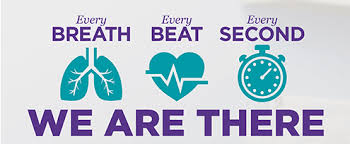This year’s Certified Registered Nurse Anesthetists (CRNA) Week, celebrated from January 20-26, calls attention to the work of nurse anesthetists and the patient care they provide.
Sponsored by the American Association of Nurse Anesthetists (AANA) , this week of celebration was once known as National Nurse Anesthetists Week. The Additional of “certified registered” helps people understand the rigorous training and continuing education for this specialty.
Nurse anesthetists work closely with a medical team and in some states, they are often the sole anesthetist on a team. According to the AANA, nearly 53,000 certified nurse anesthetists and student nurse anesthetists provide care throughout the country. Career growth in the field continues to attract top talent as the opportunities for lifelong learning and fast-paced advancements offer a dynamic environment. In addition, nurse anesthetists are among the highest paid nurses with a median annual salary of $165,000.
CRNAs have a vital role in patient care at all stages of surgery or a procedure. They assess patients prior to anesthesia, monitor them during the procedure, and continue to watch for any difficulties or problems after they come out of anesthesia. In this role, nurses offer compassion, comfort, and an intense focus on the details of medical care. They must assess visually and with equipment readings to understand how a patient is tolerating anesthesia.
In this career, CRNAs can work with a wide range of medical teams. They can practice in hospitals, stand-alone facilities, dentist offices, trauma teams, surgical facilities, military units, or pain management clinics to name only a few areas. The variety of settings means a CRNA can choose to work in specialties that hold particular interest or match an educational background or a life experience best.
Anyone interested in this field should have the correct path of educational attainment. According to the AANA, “graduates of nurse anesthesia educational programs have an average of 9,369 hours of clinical experience.” Programs for nurse anesthetists can range from 24 to 51 months. Program requirements can vary with the university, but will include essential clinical placements. Certification and recertification are also required to become a CRNA and maintain that professional standing. By 2022, students will be required to enter doctoral programs for this field.
Many CRNAs say the direct patient care, the satisfaction of being an essential part of the medical team, and the technical challenges of the work make this an exciting career path. In some states, CRNAs provide the majority, if not all of, the anesthesia care. Anesthesiologists work with patients of all ages and in settings so varied, their days are never the same. But the responsibility of keeping patients safe and being their advocate in a vulnerable time is rewarding.
- WOC Nurses Week Highlights Specialty - April 16, 2024
- Honoring Radiology Nurses Day on April 12 - April 12, 2024
- Travel Offers New Career Possibilities - April 8, 2024



